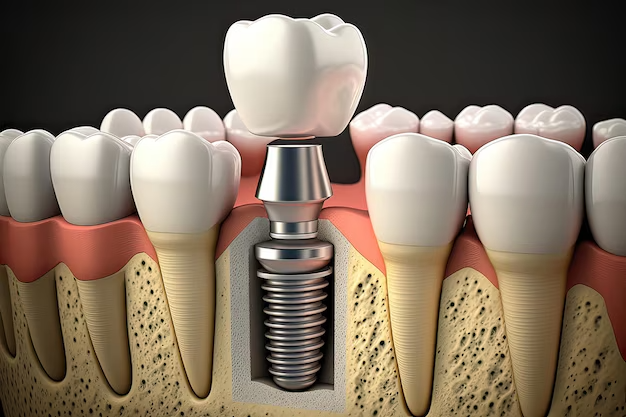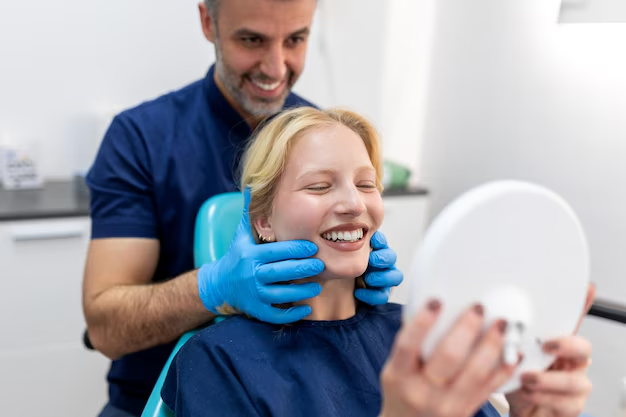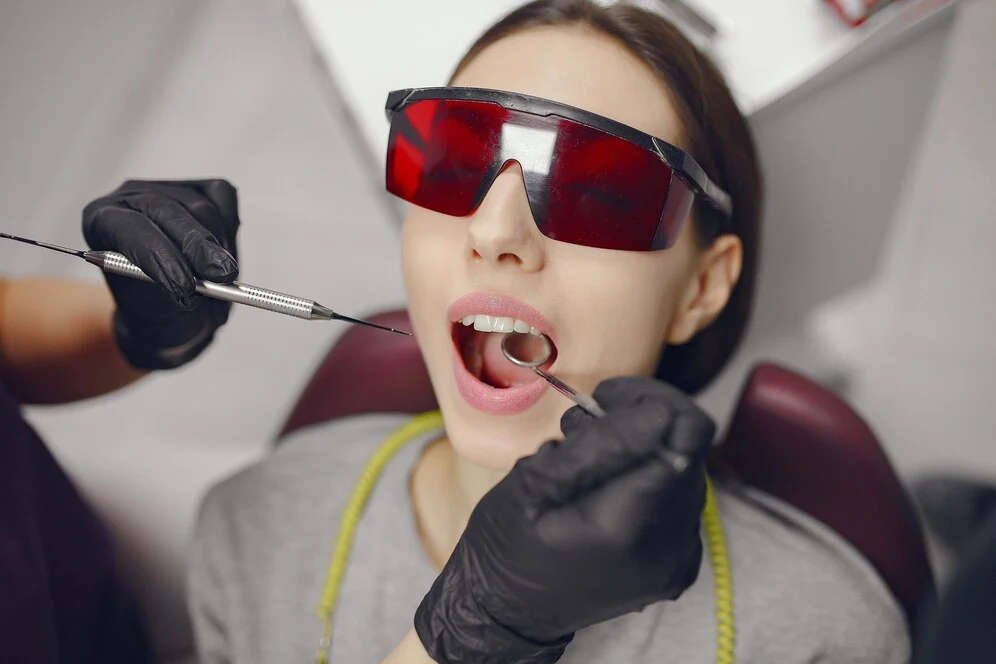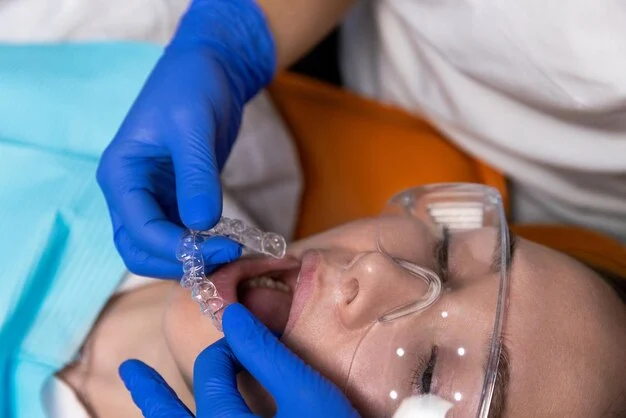Welcome to our comprehensive guide on How long does Invisalign take to fix overbite? Overbites can affect both the appearance and function of your smile, but with the advancements in orthodontic technology, solutions like Invisalign offer a discreet and effective way to address this common issue. In this blog, we’ll explore everything you need to know about Invisalign treatment for overbites, including the process, duration, potential outcomes, and more. Whether you’re considering orthodontic treatment for yourself or a loved one, we’re here to provide you with valuable information to make informed decisions about your oral health journey.
Invisalign Treatment
Invisalign treatment is a revolutionary orthodontic solution designed to correct various dental issues, including overbites, with clear aligners that are virtually invisible. These custom-made aligners gradually shift the teeth into their desired positions, providing patients with a discreet and comfortable alternative to traditional braces. The treatment process typically begins with a consultation with an Invisalign provider, where the patient’s oral health and treatment goals are assessed.
Following this, a series of aligners are custom-fabricated to fit the patient’s teeth snugly, each set slightly adjusted to encourage gradual tooth movement. Patients wear these aligners for 20 to 22 hours per day, switching to a new set approximately every one to two weeks as directed by their orthodontist. Regular check-up appointments are scheduled to monitor progress and make any necessary adjustments to the treatment plan. The duration of Invisalign treatment can vary depending on the severity of the overbite and individual patient factors.
Factors Affecting Duration of Invisalign take to fix overbite
Several factors can influence the duration of Invisalign take to fix Overbite:
Severity of the Overbite
The severity of the overbite plays a significant role in determining the length of Invisalign treatment. Mild to moderate overbites may require less time to correct compared to severe overbites, which may necessitate longer treatment durations to achieve optimal results.
Compliance with Treatment Guidelines
Consistent and proper wear of the aligners is crucial for successful Invisalign treatment. Patients who adhere closely to their orthodontist’s instructions and wear their aligners as recommended are likely to experience faster and more predictable progress.
Orthodontic Experience and Expertise
The experience and expertise of the orthodontist overseeing the treatment can impact its duration. Orthodontists with extensive experience in Invisalign treatment may be more adept at designing efficient treatment plans tailored to individual patient needs, potentially shortening the overall treatment time.

Dental Health and Bone Density
The overall dental health and bone density of the patient’s jaw can also influence treatment duration. Patients with healthy teeth and gums and adequate bone density are generally better candidates for Invisalign treatment, which can contribute to smoother and faster progress.
Patient Compliance with Instructions
Patient compliance with oral hygiene practices and any additional instructions provided by the orthodontist can also affect treatment duration. Maintaining good oral hygiene, attending scheduled appointments, and following any dietary or lifestyle recommendations can contribute to optimal treatment outcomes in a timely manner.
Typical Stages Involved in Invisalign take to Fix Overbite
Invisalign treatment for correcting an overbite typically follows several key stages, each essential for achieving optimal results:
Initial Consultation
The process begins with an initial consultation with an Invisalign provider, during which the patient’s oral health and specific concerns regarding the overbite are assessed. The orthodontist will conduct a thorough examination, which may include digital scans, X-rays, and photographs of the teeth and jaws.
Treatment Planning
Based on the findings from the initial consultation, the orthodontist develops a personalized treatment plan tailored to address the patient’s overbite. This plan outlines the precise movements required to gradually shift the teeth into the desired alignment. Advanced digital imaging technology allows for detailed treatment planning, including the prediction of the final outcome.
Active Treatment Phases
Once the treatment plan is finalized, the active treatment phase begins. The patient receives a series of custom-made Invisalign aligners, each designed to exert gentle pressure on the teeth to facilitate their movement. These aligners are worn for 20 to 22 hours per day, with patients switching to a new set approximately every one to two weeks as directed by their orthodontist.
Monitoring Progress
Throughout the active treatment phase, patients attend regular check-up appointments with their orthodontist to monitor progress and make any necessary adjustments to the treatment plan. These appointments allow the orthodontist to assess the movement of the teeth and ensure that the treatment is progressing as planned.
Refinement and Completion
In some cases, additional refinement aligners may be required to fine-tune the results and address any remaining discrepancies. Once the overbite is successfully corrected, the patient transitions to the retention phase, during which they may be provided with retainers to maintain the newly achieved alignment of the teeth.
Follow-Up Care
Even after the active treatment phase is complete, patients are encouraged to attend periodic follow-up appointments to ensure the long-term stability of the results. These appointments allow the orthodontist to monitor the retention of the corrected overbite and address any concerns that may arise.
Duration of Active Treatment
Average Duration of Active Treatment
The duration of active Invisalign treatment to fix an overbite can vary depending on several factors, including the severity of the overbite, the complexity of the case, and the individual’s response to treatment. On average, the active treatment phase typically lasts between 12 to 18 months for most patients. However, it’s important to note that this timeframe is just an estimate, and actual treatment duration may be shorter or longer depending on various factors.
During the active treatment phase, patients wear their Invisalign aligners for the majority of the day, typically between 20 to 22 hours per day, as prescribed by their orthodontist. Each set of aligners is worn for about one to two weeks before being replaced with the next set in the series. The aligners gradually move the teeth into the desired position, correcting the overbite over time.
Estimated Timeframe Based on the Severity of the Overbite
The severity of the overbite plays a significant role in determining the duration of Invisalign treatment. In general, mild to moderate overbites may require less time to correct compared to severe overbites. During the initial consultation, the orthodontist will assess the severity of the overbite and develop a personalized treatment plan tailored to the patient’s specific needs.
For mild overbites, where the misalignment is minimal, treatment duration may be shorter, typically ranging from 6 to 12 months. In contrast, moderate to severe overbites, which involve more significant misalignment of the teeth and jaws, may require longer treatment durations, typically ranging from 12 to 18 months or more.
Progress Monitoring and Adjustments
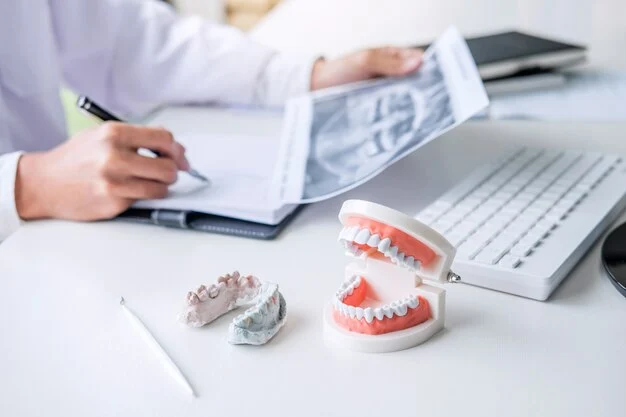
Importance of Progress Monitoring
Progress monitoring is a crucial aspect of Invisalign treatment for correcting an overbite as it allows orthodontists to track the progress of tooth movement and make necessary adjustments along the way. During the active treatment phase, patients typically have regular appointments with their orthodontist every 4 to 6 weeks. During these appointments, the orthodontist will assess the progress of the treatment, evaluate how the teeth are moving, and make any necessary adjustments to the treatment plan.
Regular progress monitoring ensures that the treatment is progressing as planned and allows the orthodontist to address any issues or concerns that may arise during the course of treatment promptly. By closely monitoring the progress of tooth movement, the orthodontist can make timely adjustments to the treatment plan, such as changing the sequence of aligners or adding additional aligners as needed, to ensure that the desired results are achieved.
Making Adjustments as Needed
Throughout the course of Invisalign treatment, adjustments to the treatment plan may be necessary to address any challenges or changes in the patient’s progress. These adjustments can include modifying the aligner schedule, refining the fit of the aligners, or incorporating additional treatment modalities, such as attachments or interproximal reduction, to achieve optimal results.
Orthodontists use various tools and techniques to monitor the progress of Invisalign treatment, including digital scans, X-rays, and intraoral photographs. These diagnostic tools allow orthodontists to assess the alignment of the teeth, the fit of the aligners, and the overall progress of the treatment accurately. By closely monitoring the progress of Invisalign treatment and making necessary adjustments along the way, orthodontists can ensure that patients achieve the best possible outcomes and enjoy the benefits of a straighter, healthier smile.
Patient Compliance and Treatment Success
Patient compliance plays a significant role in the success of Invisalign treatment for correcting an overbite. Invisalign aligners are removable, which gives patients the flexibility to remove them for eating, drinking, and oral hygiene. However, for the treatment to be effective, it’s essential for patients to wear their aligners as instructed by their orthodontist, typically between 20 to 22 hours per day. Patients must follow their orthodontist’s instructions regarding wearing their aligners, changing them according to the prescribed schedule, and attending regular follow-up appointments.
Failure to comply with these instructions can result in delays in treatment progress and may compromise the final outcome of the treatment. Orthodontists may provide patients with additional guidance on caring for their aligners, maintaining good oral hygiene, and avoiding habits that could potentially damage the aligners or impede treatment progress, such as smoking or chewing gum.
Realistic Expectations
Setting realistic expectations is essential for patients undergoing Invisalign treatment for correcting an overbite. While Invisalign offers a discreet and convenient alternative to traditional braces, it’s essential for patients to understand that the treatment process takes time and patience. Patients should have realistic expectations regarding the timeline of treatment, the extent of tooth movement achievable with Invisalign, and the potential need for additional treatments or refinements to achieve the desired results fully. While Invisalign can effectively correct many cases of overbite, severe or complex cases may require additional interventions or adjunctive treatments for optimal outcomes.
Orthodontists will discuss the potential limitations of Invisalign treatment during the initial consultation and work with patients to develop a treatment plan that aligns with their goals and expectations. By having realistic expectations and understanding the treatment process, patients can approach their Invisalign journey with confidence and achieve successful outcomes.
Conclusion
Invisalign treatment offers a highly effective and convenient solution for correcting overbites, providing patients with a discreet and comfortable alternative to traditional braces. Throughout the treatment process, patients can expect personalized care, regular progress monitoring, and adjustments as needed to ensure optimal results. By understanding the various stages of Invisalign treatment, including initial consultation, active treatment, and post-treatment care, patients can approach their journey with confidence and realistic expectations. Patient compliance, along with close collaboration between patients and orthodontists, plays a crucial role in the success of Invisalign treatment. With proper care and adherence to treatment instructions, patients can achieve a straighter, healthier smile and enjoy the long-term benefits of improved oral health and self-confidence.
FAQs
How long does Invisalign treatment take to fix an overbite?
The duration of Invisalign treatment for correcting an overbite varies depending on the severity of the case. On average, treatment can take anywhere from 12 to 18 months, but this timeline may be shorter or longer based on individual factors.
Are there any restrictions on what I can eat or drink during Invisalign treatment?
Invisalign aligners are removable, allowing patients to eat and drink without restrictions. However, it’s important to remove aligners before consuming anything other than water to prevent damage or staining.
What should I do if I experience discomfort during Invisalign treatment?
Some discomfort or pressure is normal during the initial stages of Invisalign treatment as teeth begin to shift. Over-the-counter pain relievers and cold compresses can help alleviate discomfort. If pain persists or worsens, contact your orthodontist for further guidance.


